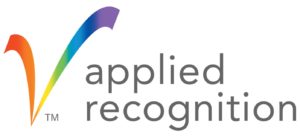Digital ID & Authentication Council of Canada Announces New President and Directors
Public and Private sector leaders come together to build and grow Canada’s digital economy by supporting the establishment of a trustworthy digital ID solutions ecosystem
Toronto, Ontario. August 25, 2016 — On behalf of the DIACC Board, David Nikolejsin, (Chair) today announced the appointment of three new Board members and a new President to support the establishment of a trustworthy digital ID solutions ecosystem to benefit all Canadians
The DIACC convenes innovators and leaders in the private and public sectors to share resources to develop digital ID frameworks, proof of concepts, and applied research to enable digital transformation and global digital economy.
“On behalf of the Board it is my pleasure to welcome Susie De Franco (General Manager Digital Channel & Products, Canada Post), Franklin Garrigues (Vice President Digital Channels, Mobile for Everyone TD), and Jeff Wright (Vice-President, Customer Journey Leader, BMO Financial Group) to the Board. I am also pleased to announce that Joni Brennan will be taking on the role of DIACC President,” said Nikolejsin. “ I would also like to take this opportunity to thank our retiring Board members and Aran Hamilton, the founding President of the DIACC for their support and vision in establishing and growing the DIACC to build and strengthen Canada’s digital economy.”
“Canada’s success in the global digital economy requires vision and leadership in innovation and digital transformation, “said Aran Hamilton, outgoing DIACC President. “Much like our forbearers, today, we are building the railway of the next century online. But you can’t have a digital economy or digital privacy without digital ID and authentication. For the past few years, I’ve had the honour and privilege to work with a dedicated group to ensure that Canadian digital transactions for people, businesses, and organizations are secure and privacy enhancing. I am proud to have played a part in helping to build Canada’s digital economy.”
“Digital ID and authentication innovations connect Canadians to each other and to the global marketplace. The leadership of the DIACC Board of Directors, and their respective organizations, demonstrates the importance of DIACC’s initiatives to accelerate an ecosystem of digital ID services that Canadian governments, businesses, non-profits and citizens can trust,” said Eros Spadotto, Vice-Chair of the DIACC Board and EVP, Technology Strategy & Operations at TELUS
Joni Brennan, President | DIACC
Joni brings 15 years of hands on experience connecting digital identity innovators and policy influencers in not-for-profit consortia to advance identity management and personal data protection industry standardization and service adoption. Prior to joining DIACC Joni lead the Kantara Initiative, a U.S. based and globally focused initiative developing identity management industry standards and operating as a trust framework provider for the U.S. Federal Government and federations at international scale.
Joni has participated in international organizational initiatives including: OECD-ITAC, ISOC, IEEE, OASIS SSTC, ISO SC27 WG5, and ITU-T SG17 Q6. She has testified regarding trusted Identity and Access Management systems for the US Office of the National Coordinator for Health Information Technology Security and Privacy (ONC HITSP). Joni recently concluded 15 years of service to the IEEE, the worlds largest professional society for electrical engineers.
“I am honored to take this opportunity to contribute to Canada’s digital evolution by leading the DIACC to accelerate innovations that connect Canadians to each other and the world through adoption of digital identity solutions that respect privacy, enable modernization of service delivery, and grow our economic and societal opportunities in support of Canada’s Innovation Agenda.” said Joni Brennan, President of the DIACC.
New Director Biographies
- Susie De Franco, General Manager Digital Channel & Products | Canada Post
Susie De Franco is a veteran business leader in the secure communications market space with over 20 years’ experience in leading the creation, development and management of electronic products and services for Canadian businesses. In 2000, she joined EPO Inc., Canada Post’s subsidiary that operated the epost service in the position of Vice-President, Client Services and Product Management.
In her current role as General Manager Digital Channel & Products Susie De Franco is responsible for leading the organization into the twenty-first century with the creation of a new suite of digital solutions to securely connect every Canadian business to their customers in a reliable and trusted manner from any internet enabled device. This includes canadapost.ca as well as epost.ca sites and mobile. The cornerstone of this transformation is epost, Canada Post’s free digital mail service that lets you receive, pay, manage and store your documents all in one place. Used by over 18,000 companies, epost is the Canadian market leader in electronic document delivery. epost Connect is a product that offers a better way to securely transmit large files and time sensitive information between parties.
Prior to joining Canada Post, she held progressively responsible positions in Technology, Client Services and Product Management across multiple industries including finance, public sector, oil and gas, and technology.
- Franklin Garrigues, Vice President Digital Channels, Mobile for Everyone | TD Bank
As Vice President, Digital Channels, Franklin leads the effort to “mobilize” TD Bank on a North American basis, with a focus on both employees and customers. In his role, he is responsible for strategy, design, and oversight of solutions to digitize the Bank and empower employees and customers to take full advantage of mobile capabilities.
Prior to this role, Franklin held various Risk Management roles in Direct Channels and Business Banking, and also led several Branch Services Centres in Canada. Prior to joining TD in 2008, Franklin was a consultant with McKinsey & Company where he served as a leader in the North American Financial Institutions Operations practice. He has also worked with L’Oreal, as a Project Engineer and in various General Management roles in manufacturing plant operations in France.
- Jeff Wright, Vice-President, Customer Journey Leader, BMO Financial Group
Jeff has been with BMO Financial Group for 12 years holding a variety of positions. He started in the Office of Strategic Management in Toronto and then moved to Chicago as the Head of U.S. Strategy with Harris Bank. After 18 months with Harris Private Bank Jeff then returned to Canada and spent five years in the field managing branches within the Canadian retail bank including being the District Vice President for GTA Central. He then returned to a headquarters role as the Vice President, Personal Sales Force Effectiveness before moving into his current role as Vice President, Customer Journey Leader. In this role Jeff leads a team that is charged with defining and delivering superior customer experiences, largely in the digital space.
Prior to joining BMO Jeff spent nearly five years with The Boston Consulting Group in the Toronto and Amsterdam offices and three years doing customer satisfaction research and consulting with Walker Information. Jeff has a M.B.A. with distinction from Duke University and a B.Comm (Honours) from Queen’s University.
The DIACC Board of Directors 2016/2017 Slate:
- Dave Nikolejsin (Chair),Deputy Minister, Ministry of Natural Gas Development
Province of British Columbia
- Eros Spadotto (Vice-Chair), Executive Vice-President, Technology Strategy, TELUS
- Andre Boysen (Treasurer), Chief Identity Officer, SecureKey
- Jeff Wright, Vice-President, Customer Journey Leader, BMO Financial Group
- Brenda Clark,Vice-President, Payment Innovation and Integration, CIBC Retail & Business Banking Division
- Susie De Franco, General Manager Digital Channel & Products, Canada Post
- André Lesage, Vice-President of AccèsD, Desjardins Group
- Corinne Charette, Senior Assistance Deputy Minister of the Spectrum, Information Technologies and Telecommunications, Innovation, Science, and Economic Development
- John Messina, Chief Information Officer of the Government of Canada, Treasury Board of Canada Secretariat
- John Jacobson, Deputy Minister, Ministry of Technology Innovation and Citizens’ Services, Province of British Columbia
- David Nicholl, Office of the Corporate Chief Information Officer, Treasury Board Secretariat
- Janice Wagner, National Digital Lead, Public Sector, PricewaterhouseCoopers LLP
- and Franklin Garrigues, Vice President Digital Channels, Mobile for Everyone, TD Bank
About the Digital ID and Authentication Council of Canada (DIACC)
Created as a result of the federal government’s Task Force for the Payments System Review, the DIACC is a non-profit coalition of public and private sector leaders committed to developing a Canadian digital identification and authentication framework to enable Canada’s full and secure participation the global digital economy. DIACC members include representatives from both the federal and provincial levels of government as well as private sector leaders.
The DIACC’s objective is to unlock societal and economic opportunities for Canadian consumers, and businesses by providing the framework to develop a robust, secure, scalable and privacy enhancing digital identification and authentication ecosystem that will decrease costs for governments, consumers, and business while improving service delivery and driving GDP growth.
Contact:
twolf@diacc.ca
 In this edition of the DIACC member Spotlight, we chat with experts from Applied Recognition. Learn about their work, why they believe trustworthy digital identification is critical for existing and emerging markets, and why they joined the DIACC league of experts.
In this edition of the DIACC member Spotlight, we chat with experts from Applied Recognition. Learn about their work, why they believe trustworthy digital identification is critical for existing and emerging markets, and why they joined the DIACC league of experts. International Leaders Praise Canada’s Focus on Privacy by Design and Collaboration
International Leaders Praise Canada’s Focus on Privacy by Design and Collaboration
 tion of the DIACC member Spotlight, we chat with DIACC member experts from Digidentity. Learn about their work, why they strongly believe international industry standardizations are critical, and why they joined the DIACC.
tion of the DIACC member Spotlight, we chat with DIACC member experts from Digidentity. Learn about their work, why they strongly believe international industry standardizations are critical, and why they joined the DIACC.
 Today we present an article submitted by DIACC guest blogger
Today we present an article submitted by DIACC guest blogger